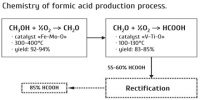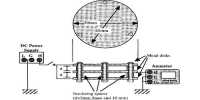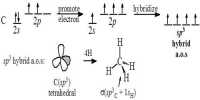A typical density for a kerosene jet aircraft fuel would be 780 kg nr3 or 50°API. Of course, there is a large difference between the temperature at which an aircraft on the ground receives fuel and that at which the aircraft cruises. At a cruising height of = 10000 metres the temperature will be about -50°C (223 K).
The calculation performed in section 2.3 for crude oil is repeated below for kerosene. Symbols are as previously and the temperature at which the aircraft is refuelled is taken to be 15°C (288 K). It can be seen from the calculation that at cruising altitude the kerosene is 11 degrees lower on the API scale than on the ground, that is, its density has significantly increased as a result of ascent.

This figure is closely matched by a graph of density against temperature for a particular jet fuel. The units of density in are lb per US gallon and these have had to be converted to kg m-3 for this discussion. The fuel under consideration has a density of 760 kg m-3 at + 20°C and a density of 808 kg nr3 at -40°C. The interested reader can easily confirm that this corresponds to a β value of 0.0010 K-1.















